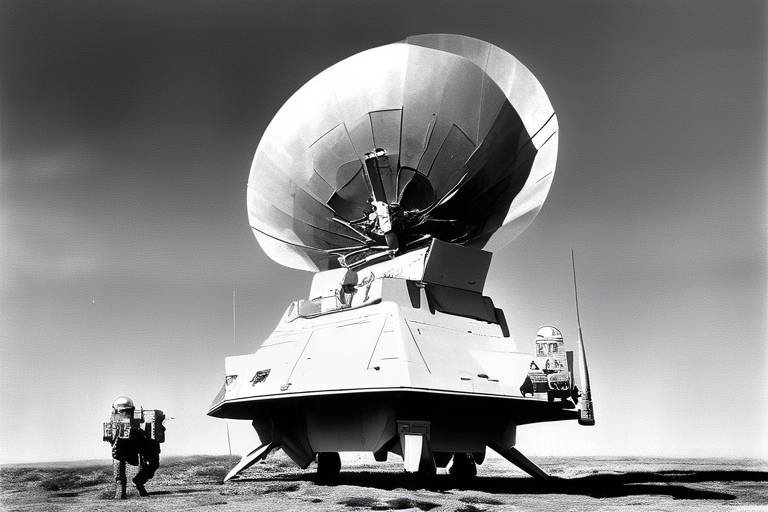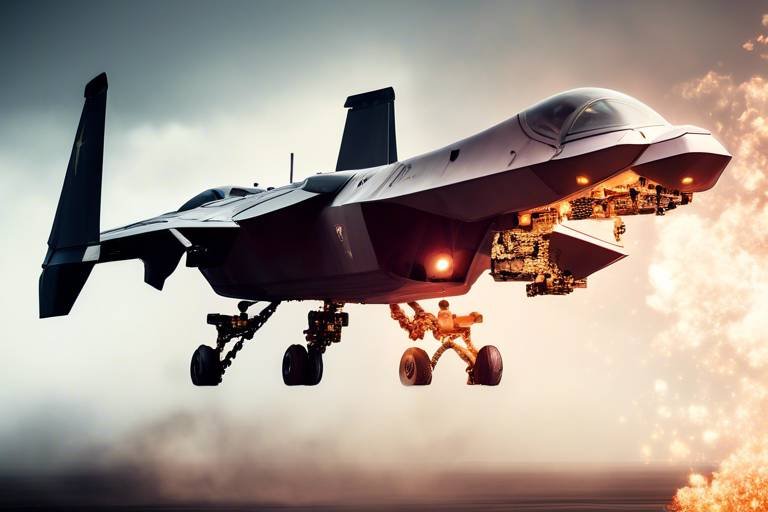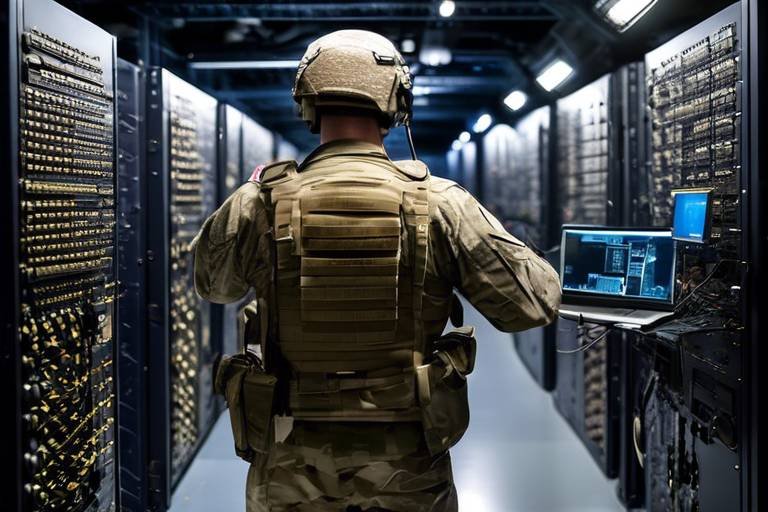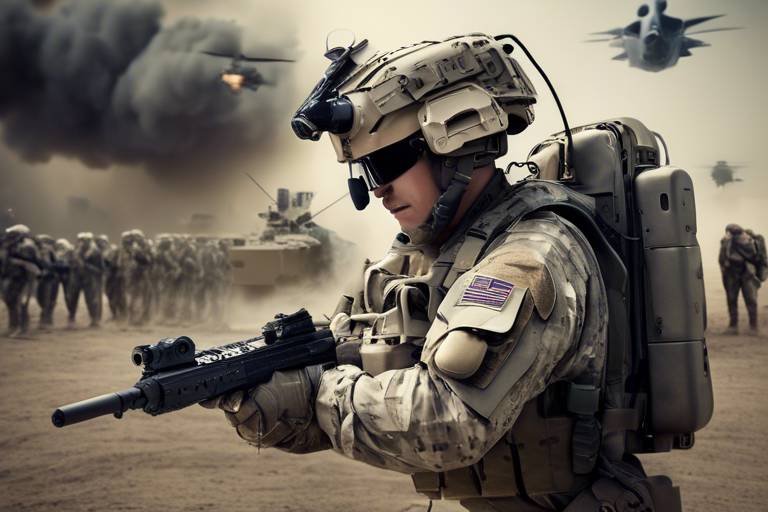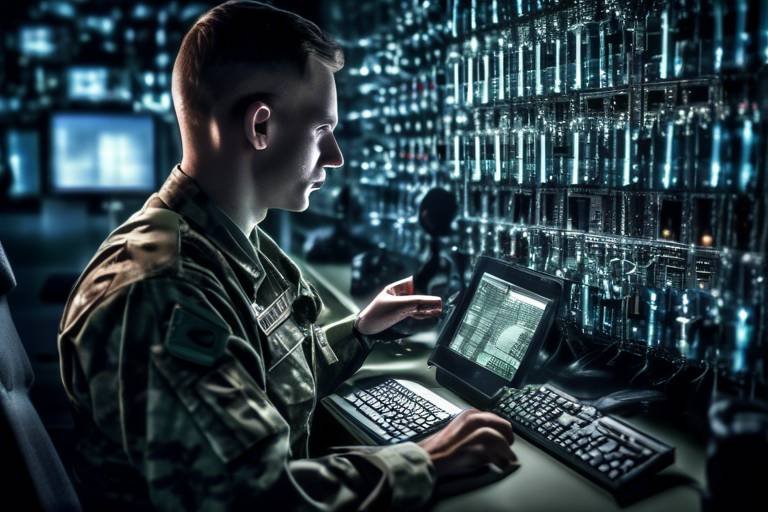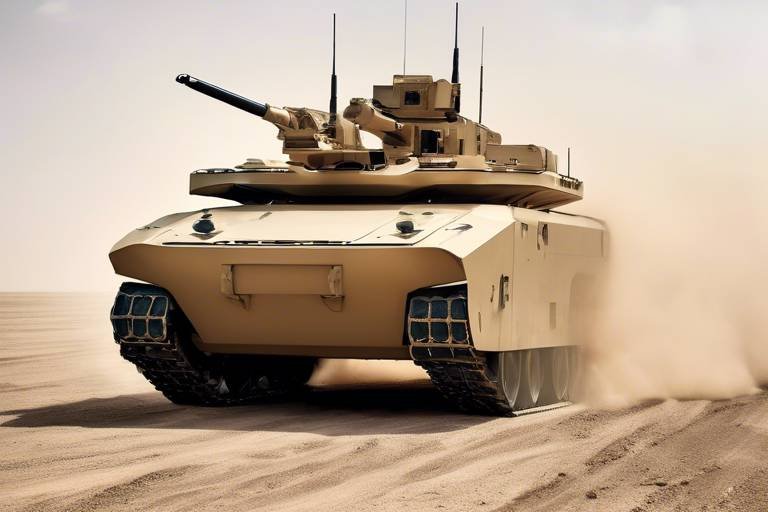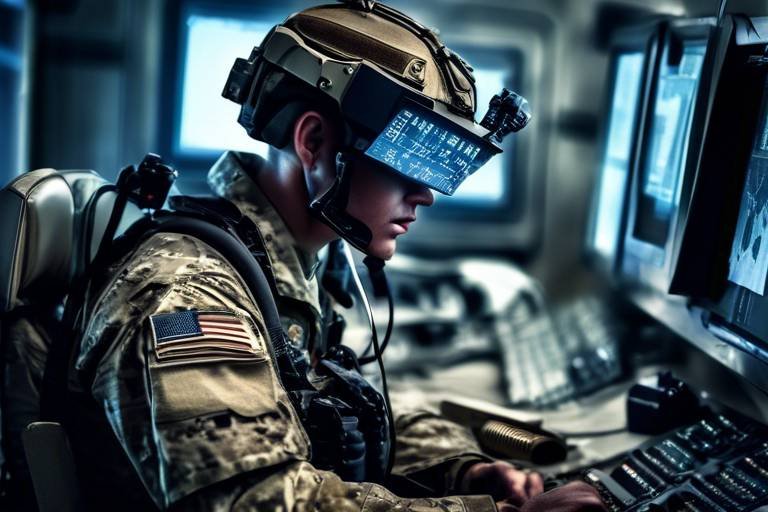Counter-UAV Technologies - Protecting the Battlefield from Drones
In today's rapidly evolving technological landscape, the battlefield has transformed dramatically, with drones becoming a common sight. These unmanned aerial vehicles (UAVs) have revolutionized military operations, providing intelligence, surveillance, and even offensive capabilities. However, with great power comes great responsibility, and the proliferation of drones has also led to significant challenges. As military forces around the world grapple with the threats posed by hostile UAVs, the need for effective counter-UAV technologies has never been more critical. This article delves into the various technologies designed to protect the battlefield from drone threats, exploring their mechanisms, applications, and effectiveness in modern warfare scenarios.
Drones have evolved significantly over the past decade, and their capabilities have expanded beyond mere reconnaissance. Today, they can carry out precision strikes, gather sensitive data, and even disrupt communications. The potential risks they present to military operations and personnel are manifold. For instance, a small drone equipped with explosives can wreak havoc on a military convoy, while larger UAVs can provide enemy forces with real-time intelligence, compromising operational security.
Moreover, the accessibility of drone technology means that not only state actors but also non-state actors and terrorist groups can exploit these tools for malicious purposes. This democratization of drone technology necessitates a robust response from military forces to ensure battlefield security. Understanding the types of UAVs and their associated risks is crucial for developing effective countermeasures.
To tackle the multifaceted threats posed by UAVs, various counter-UAV technologies have been developed, each with unique capabilities. These technologies can be broadly categorized into three main groups: electronic warfare, kinetic interceptors, and detection systems. Each category plays a vital role in neutralizing drone threats and ensuring the safety of military operations.
Electronic countermeasures are at the forefront of counter-UAV technologies, employing techniques such as jamming and spoofing to disrupt UAV operations. These methods are designed to neutralize drone threats by interfering with their communication systems and navigation capabilities. The technological advancements in this field have significantly enhanced the effectiveness of electronic countermeasures, making them a crucial component of modern military strategies.
Jamming techniques focus on disrupting the communication signals between drones and their operators. By emitting powerful radio frequency signals, these systems can effectively create a "noise" that prevents the drone from receiving commands. This can lead to the drone either crashing or returning to its point of origin. The implications of jamming strategies are profound, as they can neutralize threats without physical engagement, reducing collateral damage on the battlefield.
Spoofing methods, on the other hand, deceive UAVs into following false signals. By sending misleading information, these techniques can redirect drones away from sensitive areas or trick them into landing in secure zones. This capability is particularly valuable in military operations where protecting assets and personnel is paramount. The versatility of spoofing methods makes them an essential tool in the counter-UAV arsenal.
Kinetic interceptors represent a more direct approach to countering UAV threats. These systems physically eliminate drones using projectiles or missiles. Kinetic solutions can vary widely, from small arms fire to advanced missile systems. The deployment of kinetic interceptors in real-world scenarios demonstrates their effectiveness in neutralizing aerial threats. However, they also come with challenges, such as the potential for collateral damage and the need for precise targeting.
Effective counter-UAV strategies rely heavily on robust detection and tracking systems. These technologies are essential for identifying and monitoring UAV activities, providing military forces with a proactive defense against aerial threats. The faster a threat can be detected, the more time there is to respond appropriately.
Radar systems play a crucial role in detecting UAVs at various ranges. Recent advancements in radar technology have improved the ability to differentiate between various aerial objects, allowing for more accurate identification of UAVs. The integration of radar systems into military operations has enhanced situational awareness, enabling forces to respond swiftly to potential threats.
Complementing radar systems, optical and infrared sensors provide visual identification of UAVs. These sensors enhance tracking and targeting capabilities in counter-UAV operations, allowing for a more comprehensive understanding of the battlefield. By utilizing a combination of radar and optical technologies, military forces can achieve a layered defense strategy that significantly improves their ability to neutralize drone threats.
- What are the main threats posed by drones on the battlefield?
Drones can conduct surveillance, deliver explosives, and disrupt communications, posing significant risks to military operations.
- How do electronic countermeasures work?
Electronic countermeasures disrupt UAV operations through jamming and spoofing, interfering with their communication and navigation systems.
- What are kinetic interceptors?
Kinetic interceptors are systems that physically eliminate drones using projectiles or missiles, providing a direct response to aerial threats.
- Why are detection and tracking systems important?
These systems are crucial for identifying UAV activities and enabling timely responses to potential threats, enhancing battlefield security.

Understanding UAV Threats
Drones, or Unmanned Aerial Vehicles (UAVs), have undergone a remarkable transformation over the past decade. Initially designed for reconnaissance and surveillance, they have now morphed into versatile tools that can be used for a variety of military operations. However, with this evolution comes a plethora of threats that these flying machines pose on the battlefield. From gathering intelligence to delivering explosives, UAVs can significantly impact military strategies and operational effectiveness.
One of the most pressing concerns is the diverse range of UAV types and their capabilities. Reconnaissance drones provide real-time intelligence, allowing commanders to make informed decisions quickly. On the other hand, combat drones are equipped with weapons, making them a direct threat to personnel and infrastructure. Moreover, commercial drones, which are easily accessible and often modified for military use, can infiltrate secure areas, gather sensitive data, or even deliver payloads without the need for sophisticated technology.
The potential risks posed by UAVs can be categorized as follows:
- Surveillance and Intelligence Gathering: Drones can collect data on troop movements, equipment locations, and strategic positions, compromising operational security.
- Direct Attacks: Armed drones can target military personnel and assets, leading to significant casualties and damage.
- Psychological Warfare: The mere presence of drones can instill fear and uncertainty among troops, affecting morale and performance.
As we delve deeper into the battlefield dynamics, it's crucial to recognize that UAVs are not merely tools; they represent a shift in warfare tactics. The ability to operate remotely and autonomously allows for operations that can be conducted without putting personnel at risk. However, this also means that adversaries can exploit these technologies, leading to an arms race in drone capabilities.
Moreover, the proliferation of drones has democratized access to aerial capabilities, making it easier for non-state actors and terrorist organizations to utilize UAVs for malicious purposes. This raises significant challenges for military forces, which must adapt to counter these evolving threats. The need for effective counter-UAV technologies has never been more pressing, as the battlefield of the future will undoubtedly see an increasing number of drone engagements.
In summary, understanding UAV threats is essential for military strategists and personnel. The landscape of modern warfare is continuously changing, and with it, the tactics, technologies, and tools used by both state and non-state actors. As we move forward, it is imperative to stay ahead of these threats through innovation and the development of effective countermeasures.
Q: What are the main types of UAVs used in military operations?
A: The main types of UAVs include reconnaissance drones for surveillance, combat drones equipped with weapons for direct attacks, and commercial drones that can be modified for various military uses.
Q: How can UAVs compromise military operations?
A: UAVs can gather intelligence on troop movements and positions, deliver payloads, and create psychological impacts on personnel, all of which can undermine operational effectiveness.
Q: Why is it important to understand UAV threats?
A: Understanding UAV threats is crucial for developing effective countermeasures and adapting military strategies to address the evolving landscape of modern warfare.
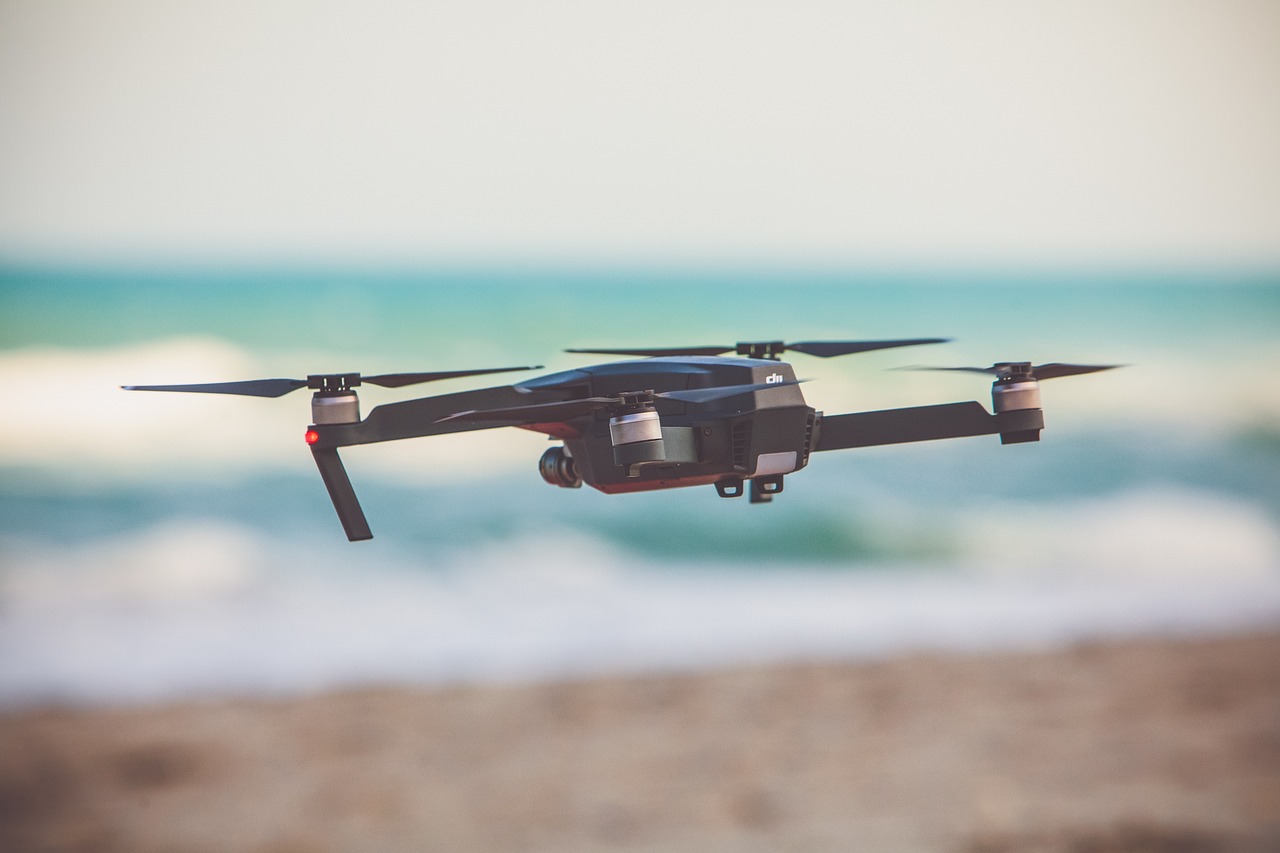
Types of Counter-UAV Technologies
This article explores various counter-UAV technologies designed to enhance battlefield security against drone threats, discussing their mechanisms, applications, and effectiveness in modern warfare scenarios.
Drones have evolved significantly, posing various threats on the battlefield. This section delves into the types of UAVs and the potential risks they present to military operations and personnel.
As the use of drones in warfare grows, so does the need for effective counter-UAV technologies. These technologies are essential in neutralizing the potential threats posed by unmanned aerial vehicles (UAVs) in various combat scenarios. Essentially, counter-UAV solutions can be categorized into three main types: electronic warfare, kinetic interceptors, and detection systems. Each of these categories plays a crucial role in ensuring the safety and effectiveness of military operations on the battlefield.
First up, we have electronic warfare, which involves using technology to disrupt the drone's communication systems. This can include jamming signals to prevent the drone from receiving commands or spoofing techniques that mislead the drone into following false signals. These electronic countermeasures can be incredibly effective, especially when deployed in conjunction with other technologies.
Next, we have kinetic interceptors. These are physical solutions designed to eliminate drones through direct engagement. Think of them as the “bullets” in the counter-UAV arsenal. Kinetic interceptors can include a range of weapons, from traditional missiles to advanced projectiles specifically designed for drone neutralization. The effectiveness of these interceptors often depends on the speed and accuracy of deployment, making them a vital component of any comprehensive counter-UAV strategy.
Finally, there are detection systems. These systems are the backbone of any counter-UAV operation, providing the necessary situational awareness to identify and track drones before they can pose a threat. Modern detection systems utilize a combination of radar, optical, and infrared technologies to ensure that UAVs are detected at the earliest possible stage. This proactive approach allows military personnel to respond effectively to aerial threats, minimizing risks to both personnel and equipment.
| Type of Technology | Description | Applications |
|---|---|---|
| Electronic Warfare | Disrupts UAV communication through jamming and spoofing. | Military operations, secure installations. |
| Kinetic Interceptors | Physically neutralizes drones using projectiles or missiles. | Combat zones, high-value targets. |
| Detection Systems | Identifies and tracks UAVs using radar and sensors. | Surveillance, early warning systems. |
In conclusion, understanding the different types of counter-UAV technologies is essential for modern military operations. Each type brings its own strengths and applications, and when used together, they create a formidable defense against the evolving threat of drones on the battlefield.
- What are counter-UAV technologies? Counter-UAV technologies are systems and methods designed to detect, track, and neutralize unmanned aerial vehicles (UAVs) to protect military operations and sensitive areas.
- How do electronic countermeasures work? Electronic countermeasures work by disrupting the communication signals between drones and their operators, using techniques such as jamming and spoofing.
- What are kinetic interceptors? Kinetic interceptors are physical weapons that eliminate drones through direct engagement, including missiles and projectiles specifically designed for this purpose.
- Why are detection systems important? Detection systems are crucial because they provide early warning and situational awareness, enabling military personnel to respond proactively to potential drone threats.

Electronic Countermeasures
In the rapidly evolving landscape of modern warfare, have emerged as a vital tool for neutralizing the threat posed by unmanned aerial vehicles (UAVs). These technologies leverage the principles of jamming and spoofing to disrupt drone operations, effectively turning the tables on adversaries who deploy these aerial assets. Imagine a battlefield where drones, once seen as omnipotent surveillance tools, are rendered helpless by sophisticated electronic warfare tactics. This is the reality that military strategists are striving to create.
At the heart of these electronic countermeasures lies the concept of signal disruption. By interfering with the communication channels that connect drones to their operators, military forces can significantly diminish the effectiveness of UAVs. This disruption can take many forms, including the use of high-powered transmitters that emit signals on the same frequency as the drone’s control system, thereby causing confusion and loss of control. The beauty of this approach is its versatility; it can be deployed in various scenarios, from large-scale military operations to localized defense mechanisms.
One of the most compelling aspects of electronic countermeasures is their ability to adapt to different UAV technologies. As drones become more sophisticated, so too must the countermeasures designed to combat them. For instance, modern drones often utilize advanced navigation systems and autonomous flight capabilities. In response, electronic countermeasures have evolved to include adaptive jamming techniques that can change frequency and modulation patterns to stay one step ahead of the UAVs. This cat-and-mouse game between drone developers and military technologists is a fascinating dynamic, showcasing the relentless pace of innovation in defense technologies.
Moreover, the integration of artificial intelligence (AI) into electronic countermeasures has further enhanced their effectiveness. AI algorithms can analyze incoming data in real-time, identifying and prioritizing threats based on their potential impact. This capability allows military personnel to deploy countermeasures more efficiently, ensuring that resources are allocated where they are needed most. The synergy between AI and electronic warfare represents a significant leap forward in battlefield technology, making it easier to protect assets and personnel from drone threats.
However, the use of electronic countermeasures is not without its challenges. One major concern is the potential for collateral damage. Jamming signals can inadvertently disrupt communications for friendly forces, leading to confusion and chaos on the battlefield. To mitigate this risk, military planners must carefully assess the operational environment and develop strategies that minimize the impact on their own units while effectively neutralizing enemy drones.
In conclusion, electronic countermeasures are a crucial component of modern military strategy, offering a proactive approach to countering UAV threats. As technology continues to advance, these systems will undoubtedly become more sophisticated, providing military forces with the tools they need to maintain air superiority in an era increasingly dominated by drones. The battlefield of the future may well depend on the effectiveness of these electronic defenses, making them a focal point for ongoing research and development.
- What are electronic countermeasures?
Electronic countermeasures are technologies designed to disrupt or deceive UAV operations through jamming and spoofing techniques. - How do jamming techniques work?
Jamming techniques interfere with the communication signals between drones and their operators, causing loss of control and functionality of the UAV. - What is spoofing in the context of UAVs?
Spoofing involves sending false signals to UAVs, misleading them into following incorrect paths or targets. - Are there risks associated with electronic countermeasures?
Yes, there is a potential risk of collateral damage, as jamming signals can disrupt communications for friendly forces as well.

Jamming Techniques
Jamming techniques are a cornerstone of modern counter-UAV strategies, designed to disrupt the communication between drones and their operators. Imagine trying to have a conversation in a crowded room where someone is constantly playing loud music; that’s what jamming does to UAVs. By overwhelming their communication frequencies, these techniques can effectively render drones useless, preventing them from executing their missions. The challenge, however, lies in the sophistication of drones today, which often employ advanced communication protocols that can adapt to jamming attempts.
There are several types of jamming strategies that military forces utilize, each tailored to specific scenarios and UAV capabilities. Some common methods include:
- Noise Jamming: This technique floods the communication channel with random noise, making it impossible for the drone to receive commands from its operator.
- Spot Jamming: This focuses on a specific frequency used by the UAV, effectively blocking signals in that narrow band.
- Deceptive Jamming: Instead of merely blocking signals, this method sends false information to the UAV, tricking it into believing it is still connected to its operator.
Each of these methods has its own strengths and weaknesses. For instance, while noise jamming may be effective against simpler UAVs, more sophisticated drones equipped with frequency-hopping spread spectrum technology can potentially evade such tactics. This adaptability necessitates a continuous evolution of jamming technologies, ensuring that military forces stay a step ahead of UAV advancements.
Moreover, the effectiveness of jamming techniques can be significantly influenced by environmental factors. For example, urban areas with numerous buildings can create multipath signals, complicating the jamming process. Similarly, weather conditions can impact the range and reliability of jamming systems. Therefore, military planners must consider these variables when deploying jamming technologies in real-world scenarios.
In addition to the technical aspects, there are ethical and legal considerations surrounding the use of jamming techniques. While they can effectively neutralize UAV threats, their use must comply with international laws and regulations, particularly concerning civilian airspace. Striking a balance between effective defense and adherence to legal standards is crucial for military operations.
As technology continues to advance, the future of jamming techniques looks promising. Innovations in artificial intelligence and machine learning are paving the way for more adaptive and intelligent jamming systems. These systems could analyze drone behavior in real-time, adjusting their tactics to counteract specific UAV maneuvers. This level of sophistication could revolutionize how military forces protect their assets from aerial threats.
Q: What are jamming techniques used for in counter-UAV operations?
A: Jamming techniques are employed to disrupt the communication between drones and their operators, effectively neutralizing the drone's control and preventing it from executing its mission.
Q: How effective are jamming techniques against advanced drones?
A: The effectiveness of jamming techniques can vary based on the sophistication of the drone. Advanced drones may employ technologies that allow them to evade jamming attempts, necessitating continuous advancements in jamming strategies.
Q: Are there legal implications for using jamming technologies?
A: Yes, the use of jamming technologies must comply with international laws and regulations, especially concerning civilian airspace. Military forces must consider these legal frameworks when deploying jamming systems.
Q: What future developments can we expect in jamming technologies?
A: Future developments may include the integration of artificial intelligence and machine learning, allowing jamming systems to adapt in real-time to counter specific UAV behaviors and tactics.
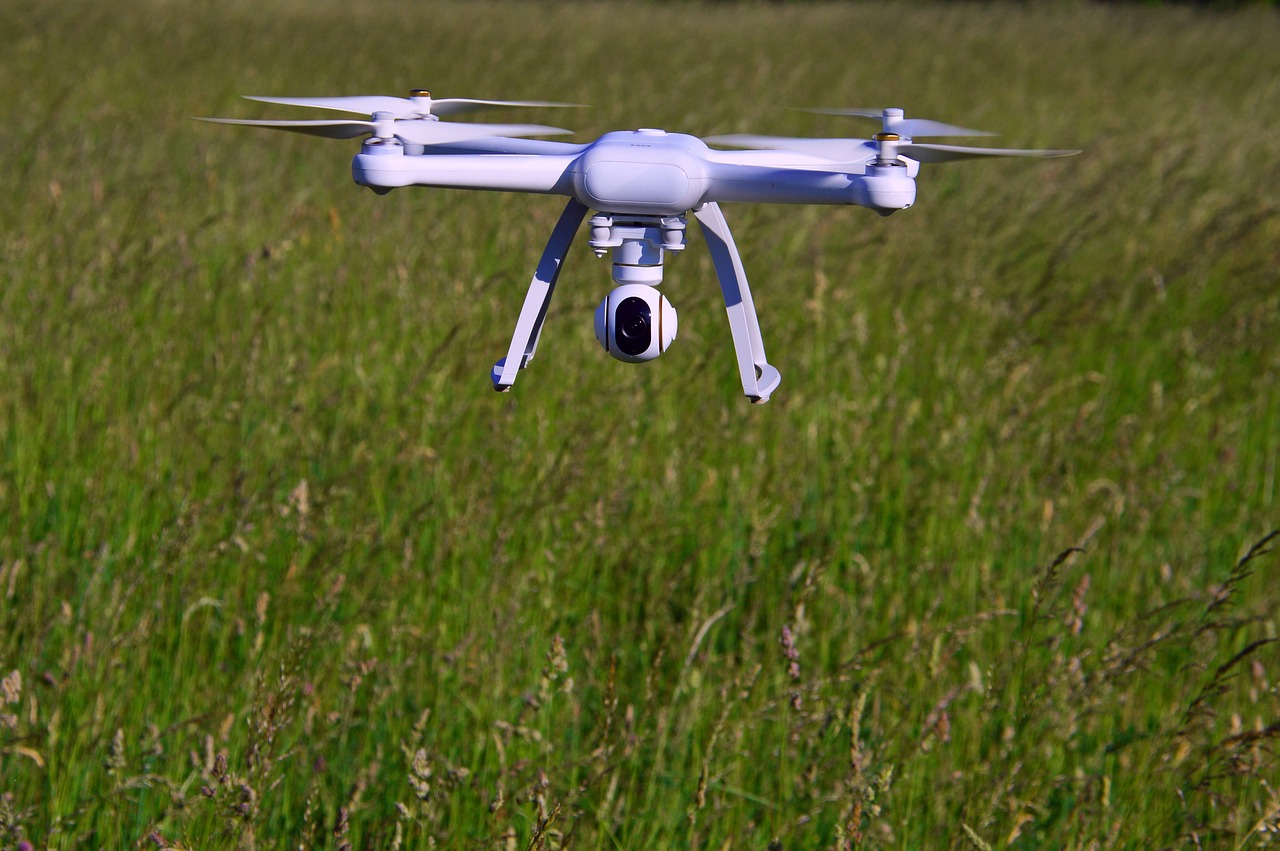
Spoofing Methods
Spoofing methods are a fascinating facet of counter-UAV technology, designed to mislead drones into following false signals. Imagine a magician pulling a rabbit out of a hat, where the rabbit represents a drone being tricked into thinking it’s heading to a safe location, while in reality, it’s being redirected away from sensitive areas. This technique is crucial in modern warfare, where the ability to manipulate a drone's navigation can protect vital assets and personnel.
At its core, spoofing involves sending out stronger, misleading signals that the UAV's onboard systems interpret as legitimate commands. These signals can be crafted to mimic the drone's original control signals, effectively hijacking its navigation system. This is particularly effective against drones that rely heavily on GPS for positioning. By overwhelming the drone’s GPS with false data, operators can redirect it, making it a powerful tool in the hands of military strategists.
There are several techniques employed in spoofing, including:
- GPS Spoofing: This method involves broadcasting signals that appear to be from legitimate satellites, tricking the drone into believing it is in a different location. This can lead the drone away from its intended target.
- Signal Injection: By injecting false commands into the communication stream, operators can take control of the drone, forcing it to land or return to a pre-defined location.
- Frequency Hopping: This technique involves rapidly changing the frequency of the signals being sent to the drone, making it difficult for the UAV to lock onto a single command source.
These methods not only serve to protect military assets but also have implications for civilian applications. For instance, law enforcement agencies could utilize spoofing techniques to mitigate rogue drones that pose a threat to public safety. However, it’s essential to note that while spoofing presents a tactical advantage, it also raises ethical concerns and potential legal ramifications, especially when used outside of military operations.
As technology continues to evolve, so do the methods of spoofing. The integration of artificial intelligence and machine learning is paving the way for more sophisticated spoofing techniques, allowing for real-time adjustments based on the drone's behavior. This could lead to an era where counter-UAV operations are not just reactive but also predictive, enabling forces to stay one step ahead of potential threats.
- What is spoofing in UAV technology? Spoofing is a technique used to mislead drones by sending them false signals, redirecting their navigation away from sensitive areas.
- How does GPS spoofing work? GPS spoofing involves broadcasting signals that mimic those from legitimate satellites, tricking the drone into calculating an incorrect position.
- Are there risks associated with spoofing? Yes, while spoofing can protect military assets, it raises ethical concerns and potential legal issues, especially in civilian contexts.

Kinetic Interceptors
Kinetic interceptors represent a powerful and direct approach to neutralizing drone threats on the battlefield. Unlike electronic countermeasures that disrupt a drone's communication or navigation systems, kinetic interceptors physically eliminate the UAVs using projectiles or missiles. This method is akin to using a well-aimed arrow to hit a target, ensuring that the threat is not just mitigated but completely removed from the airspace. The effectiveness of kinetic interceptors lies in their ability to engage drones at various altitudes and speeds, making them suitable for a range of operational scenarios.
Various types of kinetic interceptors are currently in use, each designed for specific operational needs. Some of the most notable include:
- Missile Systems: These are advanced munitions capable of engaging UAVs from considerable distances. They provide a high level of precision and can be deployed from ground-based launchers or aerial platforms.
- Projectiles: More traditional options, such as bullets or shells, can be fired from existing artillery systems. These are typically used in close-range engagements and require accurate targeting to be effective.
- Laser Systems: Emerging technologies are introducing laser-based interceptors that can disable UAVs with focused energy beams. This method offers the advantage of minimal collateral damage and a virtually unlimited magazine, as the only limitation is the power supply.
In real-world scenarios, the deployment of kinetic interceptors has proven effective in various military operations. For instance, during recent conflicts, ground forces equipped with missile systems successfully intercepted hostile drones attempting to gather intelligence or deliver payloads. The speed and agility of kinetic interceptors allow them to respond swiftly to aerial threats, providing a crucial layer of defense for troops on the ground.
However, the use of kinetic interceptors is not without challenges. Factors such as weather conditions, drone speed, and the potential for collateral damage must be considered when engaging aerial targets. Additionally, the cost of deploying missile systems can be significant, leading military strategists to weigh the benefits against the expenses. This is where the integration of kinetic interceptors with other counter-UAV technologies becomes essential, creating a multifaceted defense strategy that maximizes effectiveness while minimizing risks.
As technology continues to evolve, the capabilities of kinetic interceptors are expected to improve. Innovations such as enhanced targeting algorithms and improved propulsion systems will likely lead to more accurate and efficient systems. This evolution underscores the importance of staying ahead in the arms race against increasingly sophisticated UAVs.
Q: What are kinetic interceptors?
A: Kinetic interceptors are defensive systems designed to physically eliminate drones using projectiles or missiles. They provide a direct method of neutralizing aerial threats.
Q: How do kinetic interceptors differ from electronic countermeasures?
A: While electronic countermeasures disrupt a drone's communication or navigation systems, kinetic interceptors physically destroy the drone, ensuring that the threat is completely neutralized.
Q: What types of kinetic interceptors are commonly used?
A: Common types include missile systems, traditional projectiles, and emerging laser systems, each suited for different operational needs and scenarios.
Q: Are there any challenges associated with using kinetic interceptors?
A: Yes, challenges include considerations of weather, drone speed, potential collateral damage, and the costs associated with deploying advanced missile systems.

Detection and Tracking Systems
In the ever-evolving landscape of modern warfare, have become the backbone of effective counter-UAV strategies. These systems are designed to identify, monitor, and track unmanned aerial vehicles (UAVs) with high precision, providing military personnel with the critical information needed to neutralize potential threats. Imagine being in a game of chess, where each move must be calculated and anticipated; detection systems serve as the eyes on the battlefield, allowing commanders to make informed decisions and stay one step ahead of their adversaries.
At the heart of these systems are various technologies that work in tandem to create a comprehensive defense framework. From radar systems that can detect UAVs at significant distances to optical and infrared sensors that provide detailed visual identification, the synergy between these technologies enhances situational awareness and operational effectiveness. For instance, radar systems can pick up the faintest signals emitted by drones, even in cluttered environments, while optical sensors can offer real-time video feeds, allowing operators to assess the situation visually.
One of the significant advantages of modern detection systems is their ability to integrate with other military assets. This integration enables a seamless flow of information across various platforms, enhancing the overall response to aerial threats. Consider a scenario where a radar system detects a drone approaching a military base; that information can be relayed instantly to ground forces, enabling them to prepare defensive measures or intercept the UAV before it reaches its target. This interconnectedness is vital for creating a proactive defense strategy that can adapt to the dynamic nature of the battlefield.
To illustrate the capabilities of detection and tracking systems, let’s take a closer look at some of the key technologies involved:
| Technology | Function | Advantages |
|---|---|---|
| Radar Systems | Detect UAVs at various ranges | High accuracy, operates in diverse weather conditions |
| Optical Sensors | Provide visual identification of UAVs | Real-time video feeds, enhances target acquisition |
| Infrared Sensors | Detect heat signatures from drones | Effective in low-light conditions, complements radar |
Moreover, the continuous advancements in technology have led to the development of smart detection systems that utilize artificial intelligence (AI) and machine learning algorithms. These systems can analyze vast amounts of data in real-time, identifying patterns and anomalies that might indicate UAV activity. By employing such cutting-edge technology, military forces can significantly enhance their ability to respond to drone threats swiftly and effectively.
In conclusion, the integration of in military operations is not just a trend; it is a necessity in today's complex battlefield environment. As UAV technology continues to advance, so too must our methods of detection and response. The future of warfare will undoubtedly rely on these systems to maintain air superiority and ensure the safety of personnel and assets on the ground.
- What are the main types of detection systems used against UAVs?
The main types include radar systems, optical sensors, and infrared sensors, each serving unique functions in identifying and tracking UAVs. - How do radar systems detect drones?
Radar systems emit radio waves that bounce off objects, including drones, allowing them to be detected at various distances. - Can detection systems operate in adverse weather conditions?
Yes, many modern radar systems are designed to function effectively in a variety of weather conditions, ensuring reliable detection. - What role does AI play in detection systems?
AI enhances detection systems by analyzing data in real-time, identifying patterns, and improving the accuracy of threat assessments.

Radar Systems
Radar systems are the backbone of modern military operations, especially when it comes to countering the ever-evolving threats posed by Unmanned Aerial Vehicles (UAVs). These systems operate by emitting radio waves that bounce off objects in their path, allowing operators to detect and track UAVs at varying distances. The significance of radar technology cannot be overstated; it's not just about spotting a drone, but about understanding its trajectory, speed, and intent. In a battlefield scenario, where every second counts, having accurate and timely information can be the difference between success and failure.
Recent advancements in radar technology have led to the development of more sophisticated systems capable of detecting smaller UAVs, which were previously challenging to identify. For instance, modern radar systems can differentiate between various types of aerial vehicles, including commercial drones and military UAVs, thanks to improved signal processing algorithms and high-frequency bands.
One of the most notable innovations in radar technology is the integration of Phased Array Radar. This type of radar uses multiple small antennas, allowing it to steer its beam electronically without moving the entire system. This capability enables rapid scanning of the sky, making it easier to track fast-moving drones. Furthermore, the use of multi-function radar systems has become increasingly popular, as they can perform various tasks simultaneously, such as tracking multiple targets while providing situational awareness to operators.
To illustrate the effectiveness of radar systems in counter-UAV operations, consider the following table that outlines some key features of various radar technologies:
| Radar Type | Detection Range | Tracking Capability | Advantages |
|---|---|---|---|
| Phased Array Radar | Up to 200 km | Multiple targets | Fast scanning, high accuracy |
| Ground-Based Radar | Up to 100 km | Single target | Cost-effective, easy deployment |
| 3D Radar | Up to 150 km | Height and speed tracking | Comprehensive situational awareness |
Moreover, radar systems can be complemented by other technologies, such as optical and infrared sensors, to enhance their effectiveness. While radar can detect the presence of a UAV, these additional sensors provide visual confirmation and help identify the type of drone being tracked. This multi-layered approach ensures a robust defense mechanism against potential threats, allowing military personnel to respond swiftly and effectively.
In summary, radar systems are a crucial element in the fight against drone threats on the battlefield. Their ability to detect, track, and classify UAVs in real-time empowers military forces to maintain air superiority and safeguard critical assets. As technology continues to advance, we can expect even more innovative radar solutions that will further enhance our capabilities in countering UAV threats.
- What is the primary function of radar systems in counter-UAV operations? Radar systems primarily serve to detect and track UAVs, providing critical data on their location, speed, and trajectory.
- How do radar systems differentiate between various types of UAVs? Advanced radar systems utilize sophisticated signal processing algorithms to analyze the characteristics of detected objects, enabling them to differentiate between commercial and military drones.
- What are the advantages of using phased array radar? Phased array radar systems offer rapid scanning capabilities, high accuracy, and the ability to track multiple targets simultaneously without physically moving the radar unit.
- Can radar systems be used in conjunction with other technologies? Yes, radar systems work effectively alongside optical and infrared sensors to provide a comprehensive view of the battlefield and improve target identification.
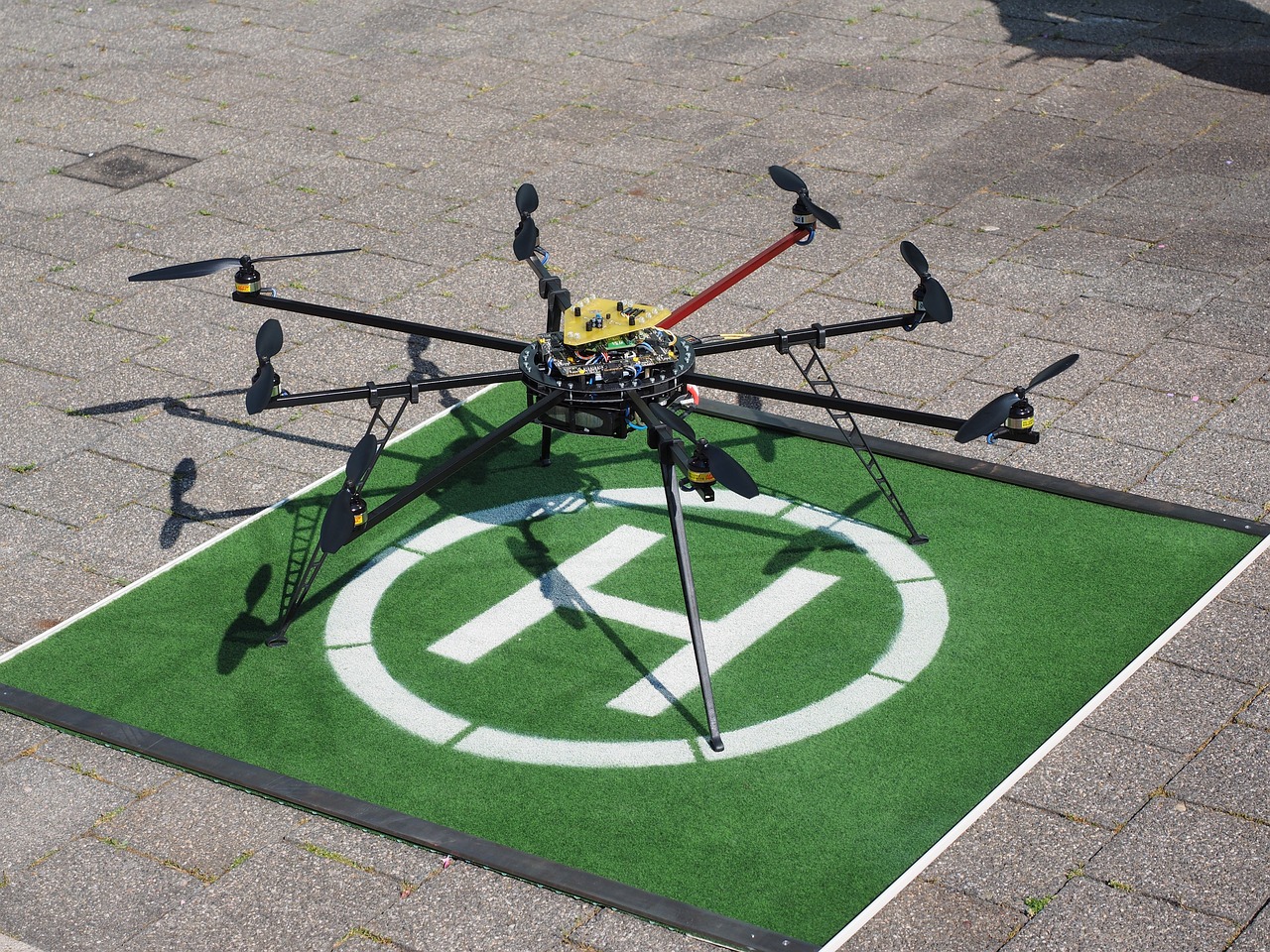
Optical and Infrared Sensors
In the ever-evolving landscape of modern warfare, have emerged as crucial components in the fight against UAV threats. These sensors provide military forces with the ability to visually identify and track drones, offering a layer of situational awareness that is vital for effective countermeasures. Imagine trying to navigate through a dense fog without a flashlight; that’s what military operations are like without these advanced sensors. They illuminate the battlefield, allowing operators to see what’s flying above them and respond accordingly.
Optical sensors, often referred to as visible light cameras, capture images in the same spectrum as the human eye. This means they can recognize shapes, colors, and movements, making them invaluable for identifying friendly versus hostile UAVs. On the other hand, infrared sensors detect heat signatures, which is particularly useful for spotting drones that might be camouflaged or flying at night. When these two technologies are combined, they create a comprehensive surveillance system that can adapt to various conditions, whether it’s daylight or darkness, clear skies or inclement weather.
One of the key advantages of using optical and infrared sensors is their ability to provide real-time data. This capability allows military personnel to make quick decisions in the heat of battle. For instance, if a drone is spotted approaching a sensitive area, operators can immediately assess whether it poses a threat. This rapid response capability can be the difference between a successful operation and a catastrophic failure. The integration of these sensors into existing military systems enhances situational awareness and improves overall mission success rates.
However, it’s not just about detection; tracking is equally important. Advanced algorithms are employed to analyze the data collected by these sensors, allowing for precise tracking of UAV movements. This data can be visualized on command and control screens, providing operators with a clear picture of the aerial environment. The ability to track multiple UAVs simultaneously ensures that no potential threat goes unnoticed. In fact, the use of machine learning techniques is becoming increasingly common, allowing systems to learn from past encounters and improve their detection and tracking capabilities over time.
Moreover, these sensors can be deployed in a variety of platforms, from ground-based systems to aerial drones themselves. For example, unmanned aerial vehicles equipped with optical and infrared sensors can perform reconnaissance missions, gathering intelligence on enemy positions while remaining out of harm's way. This not only enhances the safety of military personnel but also provides a tactical advantage by allowing forces to strike first based on accurate information.
In summary, the integration of optical and infrared sensors into counter-UAV strategies represents a significant leap forward in military technology. They provide a multi-faceted approach to identifying and tracking drones, ensuring that military operations can proceed with a higher degree of confidence and security. As technology continues to advance, we can expect these systems to become even more sophisticated, providing even greater capabilities to protect the battlefield from aerial threats.
- What are optical sensors? Optical sensors capture images in the visible light spectrum, allowing for the identification of objects based on shape and color.
- How do infrared sensors work? Infrared sensors detect heat signatures, making them effective for spotting drones in low-light conditions.
- Can these sensors track multiple UAVs at once? Yes, advanced tracking algorithms enable the simultaneous tracking of multiple drones, enhancing situational awareness.
- Are these sensors used in real-time operations? Absolutely! They provide real-time data that is crucial for making quick decisions in military operations.
- What platforms can these sensors be deployed on? Optical and infrared sensors can be mounted on ground-based systems as well as aerial drones for reconnaissance missions.
Frequently Asked Questions
- What are the primary threats posed by UAVs in modern warfare?
Drones can conduct surveillance, deliver payloads, and disrupt communications, making them a significant threat on the battlefield. Their ability to operate discreetly and access hard-to-reach areas poses unique challenges for military operations and personnel safety.
- How do electronic countermeasures work against drones?
Electronic countermeasures utilize jamming and spoofing techniques to disrupt UAV operations. Jamming interferes with the communication signals between the drone and its operator, while spoofing tricks the drone into following false signals, effectively redirecting it away from sensitive areas.
- What types of kinetic interceptors are available for neutralizing drones?
Kinetic interceptors include projectiles and missiles designed to physically eliminate drones. These systems are deployed in real-world scenarios where immediate action is required to neutralize aerial threats, ensuring the safety of military assets and personnel.
- How do detection and tracking systems enhance counter-UAV strategies?
Detection and tracking systems, such as advanced radar and optical sensors, are essential for identifying UAV activities. They provide real-time situational awareness, allowing military forces to respond proactively to aerial threats before they can cause harm.
- What advancements have been made in radar technology for UAV detection?
Recent advancements in radar technology have improved the range and accuracy of UAV detection. Modern radar systems can identify small drones at various distances, integrating seamlessly into military operations to enhance overall battlefield awareness.
- How do optical and infrared sensors complement radar systems?
Optical and infrared sensors provide visual identification of UAVs, complementing radar systems by offering detailed imagery. This combination enhances tracking and targeting capabilities, making it easier to assess potential threats in real-time.






